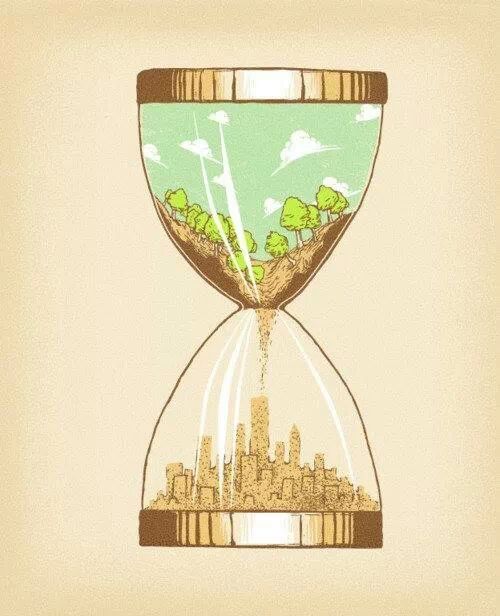For years, I heard people from different fields talk about the environmental aspect of their work and how what they do could save the planet. And I know most of it is an attempt to fit in with the trends and market the field, company, or job as something sustainable and durable. Therefore, I decided to explore if art fits into the sustainable development movement and if it could save the planet as other industries claim to. What shall we do as artists to participate in sustainable development?
In this blog post, I will refer back to my Master's thesis, and if you want the full paper for that, feel free to let me know and I will email it to you.
About a year ago, I was working on my thesis, which was about the contribution of small and medium enterprises to sustainable development (in Morocco). For a bit of context, I am a cultural entrepreneur surrounded mostly by cultural entrepreneurs who were generous enough to share with me their perspectives concerning art in sustainable development. And to my surprise, when I asked other entrepreneurs in more “serious industries”, I realized that they cared less about their contribution to sustainable development.
You may want to read: Things I genuinely hate about being an artist in 2023!
Could art/culture save our planet?
If I were to reply to the question myself, of course, art alone will not be able to save the planet, just as is the case with every other industry. All parts need to come together to raise awareness, inspire action, and foster a collective commitment to environmental sustainability.
Asking myself and other artists and cultural entrepreneurs, we think that art could save the planet through the following:
– Using our voices to support movements:
Artists can use their platforms to amplify the voices of environmental activists, indigenous communities, and other marginalized groups who are at the forefront of environmental struggles. By shining a spotlight on these issues through their art, artists can help bring attention and support to environmental justice movements.
– Raising awareness
Art has the power to capture attention and engage viewers on an emotional level. By portraying the beauty of nature, highlighting environmental issues, and showcasing the consequences of human actions, art can effectively raise awareness about the urgent need for environmental conservation. I have also had the chance to talk to artists whose medium is crochet and natural materials who strive to make their business a fully green business model.
– Inspiring empathy and connection
Art can evoke empathy and foster a sense of connection between individuals and the natural world. When people are emotionally moved by art that portrays the impact of environmental degradation, they are more likely to feel a personal stake in protecting the planet and taking action to mitigate further damage. Art can also challenge existing perspectives and encourage critical thinking about environmental issues. therefore, it can provoke thought, stimulate dialogue, and present alternative narratives, leading viewers to question their own behaviors and choices related to the environment.
– Fostering creative and sustainable behaviors
Integrating artistic approaches into environmental problem-solving, artists can contribute to innovative thinking, encourage new perspectives, and inspire sustainable practices in various fields.
And while these are things that we can easily think about when put in front of the question, I wondered if art could go beyond raising awareness and inspiring actions to actual bigger and more impactful change-making.
Art in sustainable development: what could artists do in action to make art more sustainable and inspire their communities to focus on sustainability?
Art is the most powerful medium to initiate thinking or start a dialogue about certain topics, often the most taboo ones as well. It has the power to evoke emotions, provoke thought, and inspire action. But how does art do that?
1- Visual storytelling
Artistic mediums such as paintings, sculptures, and photographs can depict the beauty of nature, the impact of human activities on the environment, and the potential consequences of our actions. By visually telling stories through art, artists can create a powerful emotional connection with the viewers and prompt them to reflect on their relationship with the natural world.
2- Immersive experiences
Artists can create immersive experiences that immerse viewers in an environment affected by environmental issues. By providing a sensory and interactive experience, art can evoke strong emotions and prompt individuals to think critically about their role in protecting the environment.
3- Artistic activism
Many artists use their work to directly address environmental concerns and advocate for change. Through their art, they can challenge the status quo, raise awareness about specific issues, and call for action. This can take the form of public art installations, performance art, or street art, which can have a powerful impact on communities and spark conversations.
4- Collaborative projects and community engagement
Art can serve as a catalyst for bringing communities together around environmental issues. Collaborative art projects, workshops, or community murals can engage people of all ages and backgrounds, fostering a sense of ownership and responsibility for the environment. This involvement can encourage people to become more conscious of their actions and inspire collective action.
5- Education and communication
Art can simplify complex environmental concepts and make them accessible to a broader audience. Through visual representations and symbolic imagery, art can communicate scientific information, raise awareness about specific challenges, and propose sustainable solutions. Art can engage people emotionally, leading to a deeper understanding and a call to action.
6- Recycled and sustainable materials
Artists can create environmentally conscious art by using recycled or sustainable materials. This not only serves as a statement against waste and consumerism but also inspires viewers to reconsider their own consumption patterns and the potential for upcycling or repurposing materials.
Conclusion
I’m curious to know, as an artist, do you care about sustainable development. and what do you do to contribute to it? Let me know in the comments and enjoy creating <3


